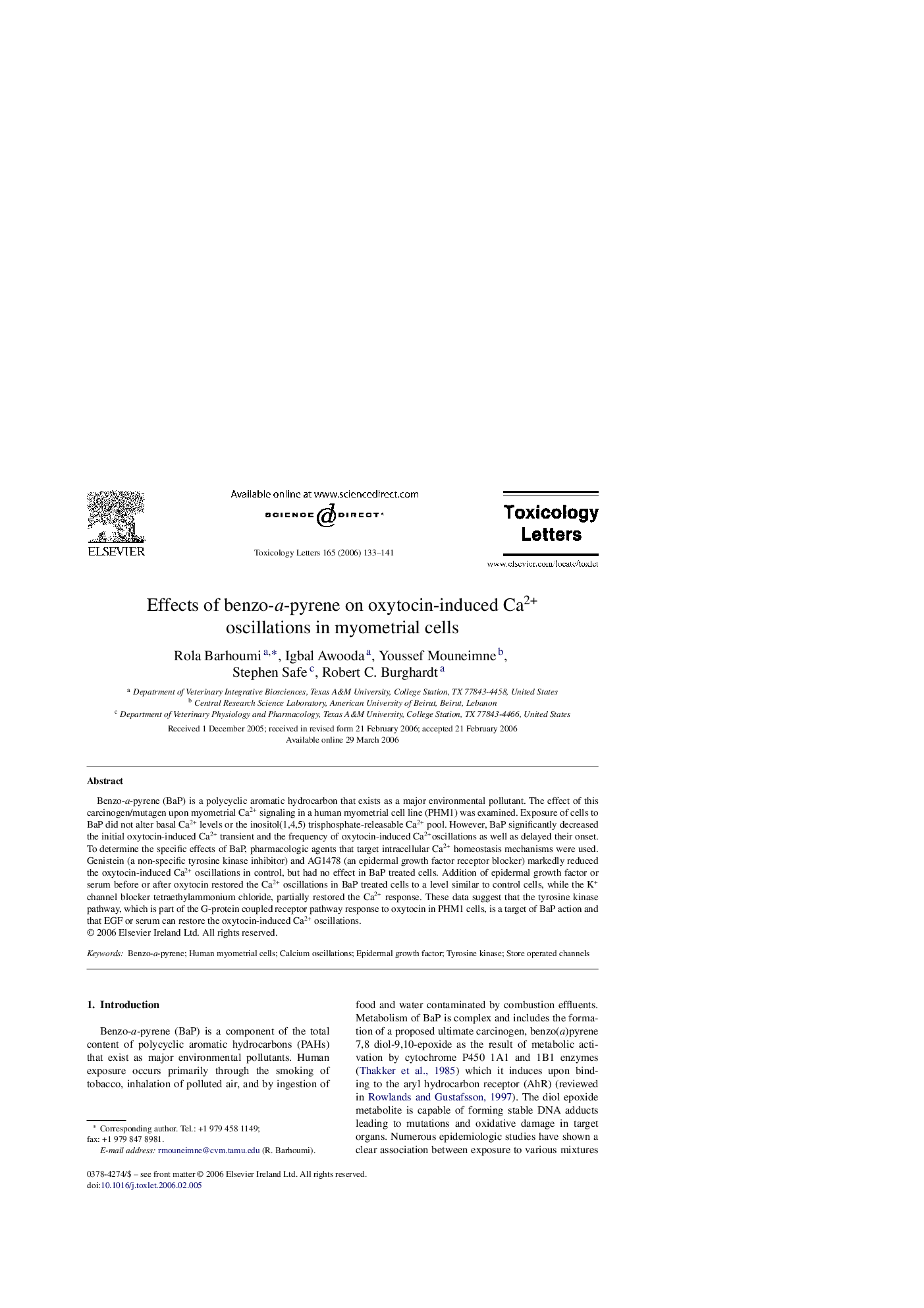| Article ID | Journal | Published Year | Pages | File Type |
|---|---|---|---|---|
| 2602264 | Toxicology Letters | 2006 | 9 Pages |
Benzo-a-pyrene (BaP) is a polycyclic aromatic hydrocarbon that exists as a major environmental pollutant. The effect of this carcinogen/mutagen upon myometrial Ca2+ signaling in a human myometrial cell line (PHM1) was examined. Exposure of cells to BaP did not alter basal Ca2+ levels or the inositol(1,4,5) trisphosphate-releasable Ca2+ pool. However, BaP significantly decreased the initial oxytocin-induced Ca2+ transient and the frequency of oxytocin-induced Ca2+oscillations as well as delayed their onset. To determine the specific effects of BaP, pharmacologic agents that target intracellular Ca2+ homeostasis mechanisms were used. Genistein (a non-specific tyrosine kinase inhibitor) and AG1478 (an epidermal growth factor receptor blocker) markedly reduced the oxytocin-induced Ca2+ oscillations in control, but had no effect in BaP treated cells. Addition of epidermal growth factor or serum before or after oxytocin restored the Ca2+ oscillations in BaP treated cells to a level similar to control cells, while the K+ channel blocker tetraethylammonium chloride, partially restored the Ca2+ response. These data suggest that the tyrosine kinase pathway, which is part of the G-protein coupled receptor pathway response to oxytocin in PHM1 cells, is a target of BaP action and that EGF or serum can restore the oxytocin-induced Ca2+ oscillations.
